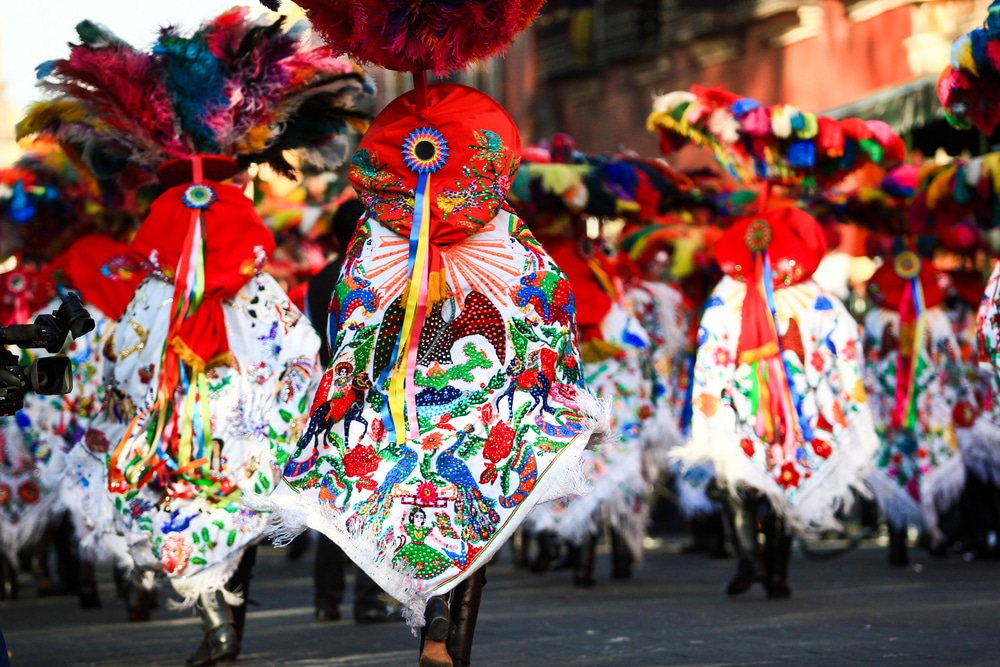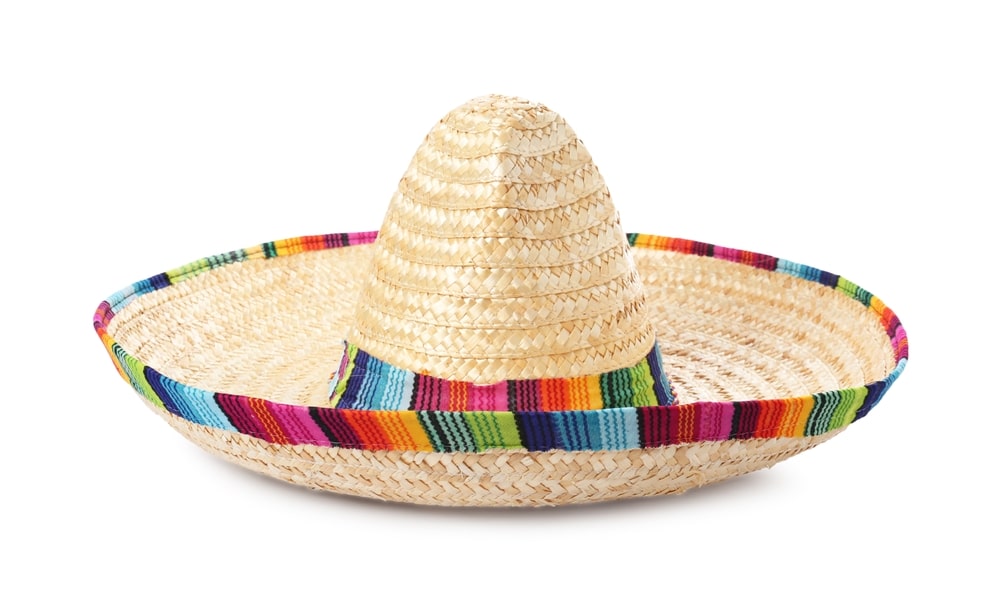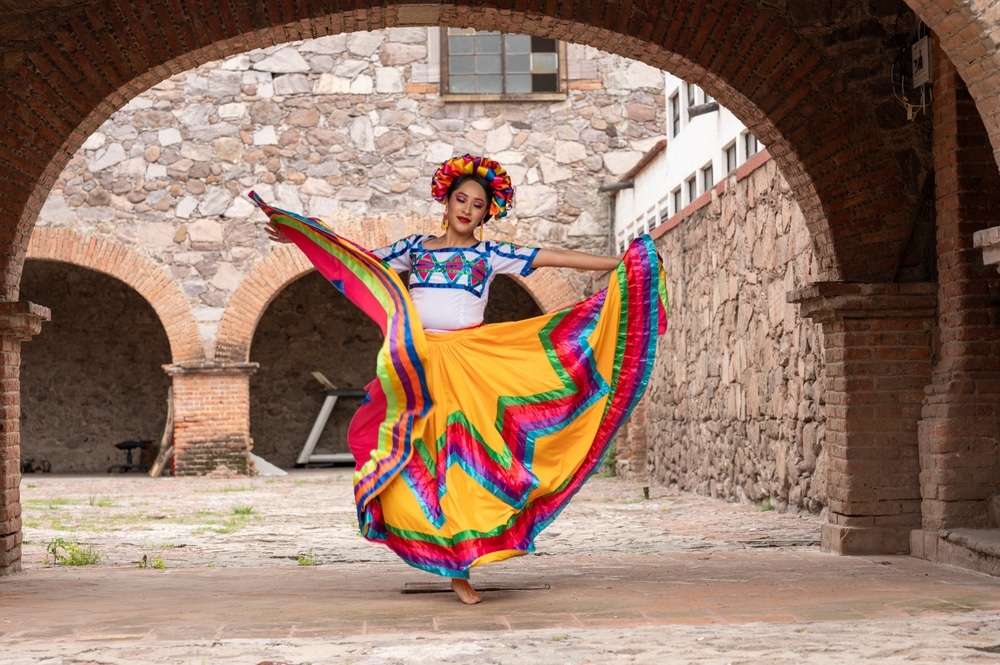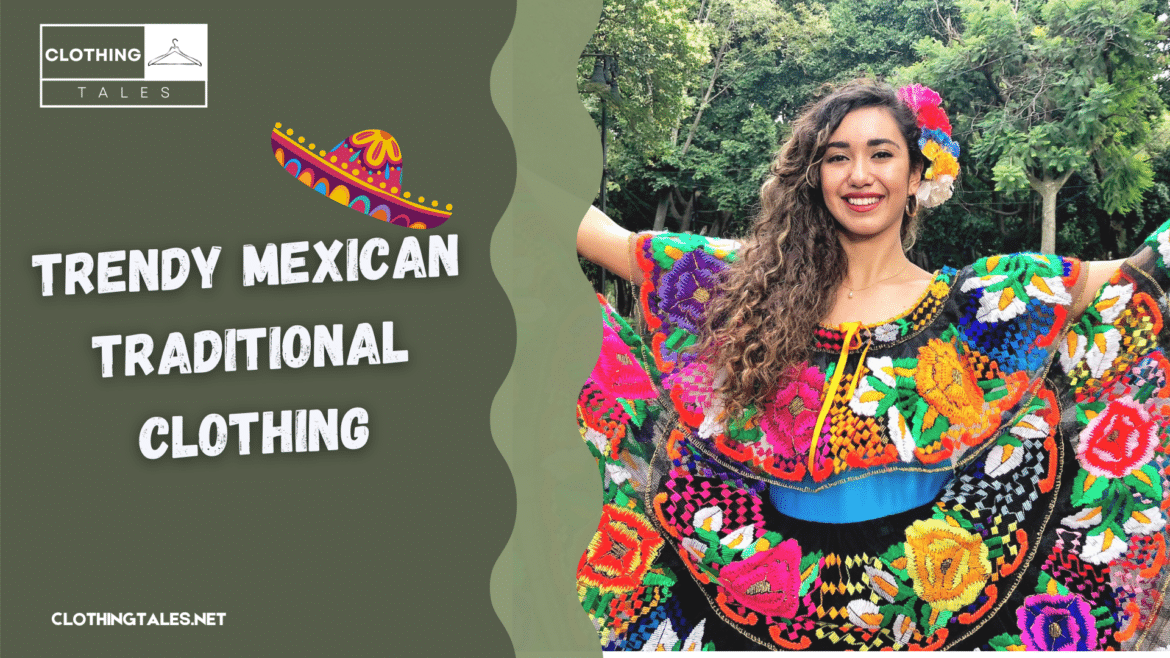Table of Contents
Looking to wear something fun and traditional? Why not go for some Mexican vibe? If you look at it, Mexico is a vast nation. Moreover, it is a country that is rich in culture and traditions. Just like traditional Russian clothing, Traditional Mexican clothing has its charm and vibe worldwide. If you are related to Mexico or its ancestry, you must be fond of traditional Mexican clothing. So, if you want to learn more about Mexico and its traditions regarding attire, you have come to the right place. Let us dive straight into the roots of the Mexican region and explore more about clothing.
Mexican Attire
When you step into the colorful world of traditional Mexican clothing, here each seam reveals a tale of rich cultural pride and heritage. Mexican fashion honors a tapestry of hues and textures. From the classic China Poblana gowns to the classic beauty of the Charro suits. Men and women have been decorating themselves with hand-woven fabrics. Moreover, with elaborate hand embroidery that speaks of artisanal craftsmanship, passed down through the ages for millennia.
- The billowing skirts and wide-brims of traditional Mexican attire hats conjure visions of Frida Kahlo’s ageless grace while the vibrant colors of cotton and wool clothing whisk you away to the busy streets of San Luis and beyond.
- See Frida Kahlo’s preserved Mexican dresses.
- Mexican apparel captures this country’s many landscapes and cultural mosaics, from the shore to the highlands.
- These markers of identity and customs endure into the 20th century, demonstrating the resilient nature of Mexico and its people.
So, embrace the charm of traditional Mexican attire and dance to the beat of its brilliant threads, whether for a joyous occasion or a stroll through the colorful streets.

Roots of Mexican Clothing
Mexican traditional attire is a rich tapestry of cultural history that combines elements of European colonialism with native traditions.
- These typical costumes, with a rich historical background, showcase Mexico’s indigenous populations’ various customs and artistry and the effects of Spanish colonization.
- The fundamental components of traditional clothing are from materials by ancient Mexican cultures, such as cotton, bark, and agave fibers.
- These materials represented the close bond between humans and their natural surroundings and offered comfort and durability.
- Indigenous societies have a profound understanding of textile arts passed down through the decades, as evidenced by their elaborate weaving techniques.
- Every piece of clothing, from colorful huipiles to finely embroidered shirts, conveys a sense of place and cultural identity.
- Moreover, Spanish colonists added new patterns and textures to wool and silk, enhancing the variety of Mexican clothing.
- Native American and European components came together to create a distinctive look that honors its historical roots while continuing to evolve.
Traditional Mexican apparel is a monument to the legacy of indigenous artistry and cultural resilience, even in the face of global fashion trends and the industrialization of production processes.
Characteristics of Mexican Wear
Mexican traditional wear is an enthralling representation of the nation’s cultural diversity. It varies from traditional European designs by several unique characteristics.
- Elaborately Designed Fabrics: Garments are frequently made from rectangles of elaborately woven fabric, which displays the expert craftsmanship of Native American tribes.
- Brocading: The cloth is embellished with intricate patterns that reflect the indigenous people’s cultural heritage and meaning. These patterns include geometric shapes, flowers, animals, and birds.
- Lacework and Embroidery: These delicate embellishments passed down through the years preserve ancient wisdom and provide clothes with rich patterns and textures.
- Vibrant Colors: The palette is dominated by vibrant colors like reds, blues, greens, and yellows, which represent perseverance, celebration, and life.
- Significance to Culture: Traditional Mexican attire honors long-standing customs while showcasing the richness and complexity of Mexico’s cultural tapestry.

Types of Mexican Men’s Clothing
Here are some of the types of Mexican attire for men.
Sombrero
In traditional Mexican clothing male, the sombrero is a decorative and useful item.
- It is frequently made of straw and represents cultural history while protecting wearers from the intense sun.
- Festival sombreros are colorful and have elaborate decorations around the rims, representing joy and celebration.
- On the other hand, regular sombreros are more straightforward, focusing on practicality to shield men’s faces from intense sunshine while engaging in daily tasks.
- This classic headgear personifies how Mexican clothing combines history and utility.
Sarape
Among traditional men’s clothes from Mexico, the sarape is a noteworthy piece valued for its cultural significance and adaptability.
- It is made of fleece or wool and functions as a blanket and poncho, keeping you warm in the cold.
- Sarpes worn at festivals are adorned with brilliant, multicolored patterns of reds, blues, and yellows but are usually found in muted tones like greys and browns for shepherds’ daily wear.
- This classic piece, a mainstay of traditional Mexican men’s clothing, represents Mexico’s rich textile legacy.

Mexican Traditional Clothing for Females
Let us now learn a bit about the Mexican women clothes.
Huipil
The Huipil, a staple of traditional Mexican clothing for ladies.
- It is a colorful, cozy blouse embroidered with detailed designs representing celestial and divine themes.
- Wearing the Huipil, which represents a person’s connection to the universe, incorporates the wearer into a diverse cultural fabric.
Blouse
Like the traditional Huipil, the blouse has short sleeves, colorful bodices.
- With a detailed embroidery that honors Mexican history.
- It showcases Mexico’s rich textile legacy by embracing cultural elements such as people, animals, and birds, all crafted from hand-embroidered fabric.
Traditional Skirt
Spanish ancestry gives rise to the bright colors and varied textiles used in traditional Mexican skirts.
- These range from exquisite silks to hand-woven cotton.
- Clad in elaborate embroidery and motifs, these knee- or ankle-length garments wrap around the body and are secured with a ribbon.
Rebozo
A classic piece of traditional Mexican apparel for women, the rebozo combines a scarf’s practicality with a shawl’s style.
- Designed in various hues and patterns, frequently featuring dexterous fringes, it highlights feminine motions.
- Moreover, functions as a useful item for carrying and cradling babies.

Traditional Mexican Folk Clothing
Here is a look at some frequently worn folk Mexican clothing.
Charro Suit
- A traditional folk typical dress of Mexico, the charro suit has a deep cultural meaning and history.
- Its vivid hues, fine stitching, and complex patterns represent the beauty and legacy of Mexican culture.
Poncho
- Traditionally woven from wool or cotton or simply cotton wool, the poncho is a folk garment with a neck split and colorful line designs.
- Its watertight design sets it apart from the serape.

Final Reflections
Summing up, within the complex fabric of Mexican culture, traditional attire is a vivid symbol of history, individuality, and creativity. Hence, every article of clothing, from the colorful charro suit worn by men to the finely embroidered Huipil worn by women, tells a story of skill and history.
In conclusion, discovering the subtle details of traditional Mexican dress reveals more than simply clothes. An enduring national symbol flaunted in every seam, color, and embroidered design. Therefore, Mexican apparel embodies the spirit of a culture that flourishes in its appreciation of diversity and heritage, enduringly woven into the fabric of its people’s lives while embracing innovation and tradition.
VESTIR CON ELEGANCIA!
